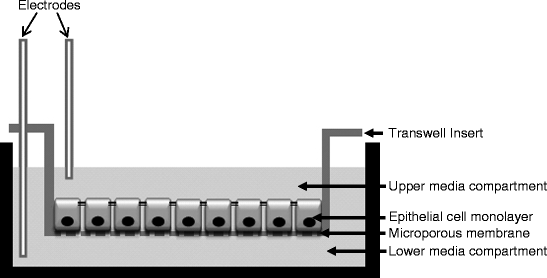BIH, circa December 1994.
– JBM: Would you be interested in coming back?
– JM: For sure, after I am done with my residency..
And in early 1996 my family and I left Madrid for Boston, landing at Logan during one of the worst blizzards ever. I would join Jeff Matthews’ lab at the Beth Israel Hospital, later Beth Israel Deaconnes Medical Center.
At that time, I ignored that T84 cells were going to be an important companion over the next years. And maybe for the rest of my life.
I did not have the slightest idea of what cell culture, T84 cells, electrophysiology, Ussing chambers, dual-voltage clamp or patch-clamping meant. My natural instinct was to go down to the BIH library (a small but splendid one) and hide myself behind a mountain of books and articles that I thought would be helpful to accelerate my learning.
This was a totally unintelligible field, due to the absence of any previous experience from my side. Long conversations with Jeff, Bruce, Cecilia, Tim or Jeremy helped me more than any article. Tacit knowledge may be more relevant that explicit knowledge for a beginner. But I must admit that for weeks, at lab meetings, silence and the «tell-me-more look» were the only signs that the rest of the team received from me.
I learnt to take care of T84 cells. I grew my own T84s, not HT29s that I very much disliked because they were more undifferentiated and more appropriate for Hodin’s lab (excellent work, Inram). These cells were my friends for hours in the hood, in the lab, night and day, day and night.
There were flasks, and buffered solutions, and calf sera, and antibiotics, and pipettes, and time, light, temperature. One must treat them well, feed them and let them thrive in monolayers. If you take good care of the monolayers, keep them safe, they will answer your questions.
And they did. In less than six months the first manuscript aimed at the American Journal of Physiology (Cell Physiology) was ready to be submitted. And we were successful!
T84 cells have a well-stablished shape to execute their functions and tightly join each other to form a monolayer, a barrier that resembles what we see in our intestinal mucosa. When externally stimulated, signals are released. Internal communication pathways are activated through different second messengers and cells communicate among themselves in order to coordinate their responses, the vectorial transport of chloride from the basolateral to the apical side, while maintaining the monolayer intact.
But let me go back to the beginning.
I was unaware of how T84 cells had immensely contributed to overcompensate my strong shyness, while responding to my insane curiosity, until I read Graham Mackenzie’s reflection on social media and cell culture.
I like stories, I am addicted to questions. So in the JBM’s lab I had all I could ask for. Sat in my chair, with a dual-voltage clamps and my T84s grown in wells, I couldn’t stop throwing questions to them. Often times, they responded with unexpected answers. In some instances, they gave me the answer that I was expecting or did not respond because the question was wrongly formulated. Then, I could get excited sharing my little findings with people that were far more intelligent than me. That brings enough confidence to go beyond our personal limitations.
Of course there was some noise. But when noise disturbed me, it was just the result of my inability to listen to the exciting stories that my T84 cells were telling me. Noise is meaning at a different scale.
I joined Twitter following Jeff Matthews’ steps. Maybe what I experienced and learnt during my stay at Matthews’ lab helps me enjoy social media more than what most people do. Maybe B¡because, like cell culture, social media is growing a network with more connected people, more diverse, increasing the density of connections and letting information freely flow from one person to another.
If I cultivate the network, if I sincerely connect with other people, they will enjoy answering questions with me. We may not be right all the time, but we enjoy the pleasure of figuring things out together.
That’s why I love what I do and I do what I love.
«Social media provides ways to understand who makes and shares health stories, the potential audience, and the stories themselves» – Graham Mackienze

